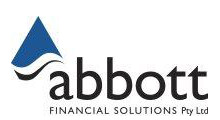Having an offset account may help you to pay off your home loan faster and save you thousands of dollars in repayments, but how exactly do they work? Are they worth it? Here we explain.

What is an offset account?
An offset account is an account linked to your home loan that operates like a transaction or savings account. It offsets the balance in that account against the balance of your home loan, so you’ll only be charged interest on the difference.
Having an offset account may help you to pay off your home loan ahead of its term and save thousands of dollars over the life of the loan, simply by depositing all your regular income and earnings into your offset account.
These accounts may come with higher costs, so it’s important to crunch the numbers to make sure you’re ahead in the long run.
How an offset account works
Say you have a home loan balance of $400,000 and savings of $20,000. If you keep the $20,000 in an offset account, the interest on your home loan will only be charged on $380,000, not $400,000. You won’t receive interest on the $20,000 in the offset account; instead, that $20,000 is offsetting and reducing the interest otherwise charged on your home loan.
Even though you typically don’t receive interest with an offset account, your money is still working hard for you. The point of an offset account is to reduce the amount of borrowed money on which you are paying interest and shorten the term of your loan.
Like a regular transaction or savings account, your money is still accessible in the offset account. But if you make a withdrawal, you’ll have less money working to lower the interest charged on your home loan.
What’s the difference between an offset account and a redraw facility?
Although an offset account can get you the same results as using a re-draw facility, the two are quite different. An offset account is like a savings account linked to your loan, whereas a redraw facility allows you to draw back (or use) additional loan repayments you’ve made over and above the minimum payments required. Both will give you interest savings on your loan. Some loans offer both a re-draw facility and an offset account, although it’s usually quicker and easier to access funds from an offset account.
How much could you save?
The more money you have in your offset account, the more you could save on interest payments for your home loan, which will likely make your home loan term shorter.
CASE STUDY
Samantha borrowed $325,000 with an interest rate of 3.00% pa over 30 years to buy her first home.
She opted for a loan with an offset account because she wanted to find a way to save money over the life of her loan. She deposited $10,000 into her offset account, so she only pays interest on $315,000.
In doing so, Samantha has shaved ten months off her loan term and will save $14,063 in interest payments if her repayment amount remains unchanged over the term of the loan.
This case study is illustrative only and is not an estimate of the investment returns you will receive or fees and costs you may incur. This case study is based on the following assumptions: a) loan size of $325,000, b) interest rate of 3.00% pa for the entire life of the loan, c) nominal loan term of 30 years, d) repayments are principal and interest ($1371 per month), e) no withdrawals are made from the offset account (ie the balance remains as described above).
Types of offsets
100% offset account – 100% or ‘full’ offset accounts use every dollar in your offset account to offset the balance in your home loan account. These are typically available for variable rate home loans. The ‘interest’ you accrue on the offset account reduces the interest you pay each month on your loan. More of your repayment comes of the loan principal.
‘Partial’ offset account – the ‘interest’ you accrue in the offset account is at a lower rate than what is charged on your loan. For example, your loan rate is 3% but the offset rate is 1% – still saving, but not as good as 100% offset.
Under another type of partial offset account, which is less common, only part of the balance is used to offset your loan. These types of accounts may be available for certain fixed-rate loans. For example, if you had a 40% partial offset account, with a loan balance of $200,000 and savings of $20,000, you would offset $8,000 from your loan balance (40% x $20,000) and pay interest on $192,000.
The pros and cons of offset accounts
|
Pros |
Cons |
|
Reduce the length of your loan – by reducing the loan balance you’re charged interest on, but keeping your repayments the same as before, you can pay off your home loan faster. |
Relatively higher fees – having an offset account could come with additional fees, so be sure to understand the costs. |
|
Save on interest repayments – the higher the balance in your offset account, the more you can save on interest costs for your home loan. |
Relatively higher interest rates – the interest rate for home loans with an offset account are typically higher. Crunch the numbers to make sure it’s right for you. |
|
Potential tax benefits – because the interest benefit from your offset account is not considered taxable income. |
A large deposit – in some cases, for an offset account to be worthwhile given the additional costs, you need a substantial balance in the account. |
|
Flexibility – you have unrestricted access to the money in your offset account. |
Financial discipline required – if you make a habit of regularly withdrawing from the offset account, you’re unlikely to enjoy the full benefits of the feature. |
Loan offset calculator
Work out how much time and interest you can save by offsetting your money against your loan and reducing your loan interest with our Loan offset calculator. Calculate
Contact us on 07 3245 3438 if you’d like to talk about offset accounts and how they could benefit you over the long term.
Source: AMP November 2021
Important:
This information is provided by AMP Life Limited. It is general information only and hasn’t taken your circumstances into account. It’s important to consider your particular circumstances and the relevant Product Disclosure Statement or Terms and Conditions, available by calling 07 3245 3438, before deciding what’s right for you.
All information in this article is subject to change without notice. Although the information is from sources considered reliable, AMP and our company do not guarantee that it is accurate or complete. You should not rely upon it and should seek professional advice before making any financial decision. Except where liability under any statute cannot be excluded, AMP and our company do not accept any liability for any resulting loss or damage of the reader or any other person. Any links have been provided for information purposes only and will take you to external websites. Note: Our company does not endorse and is not responsible for the accuracy of the contents/information contained within the linked site(s) accessible from this page.


